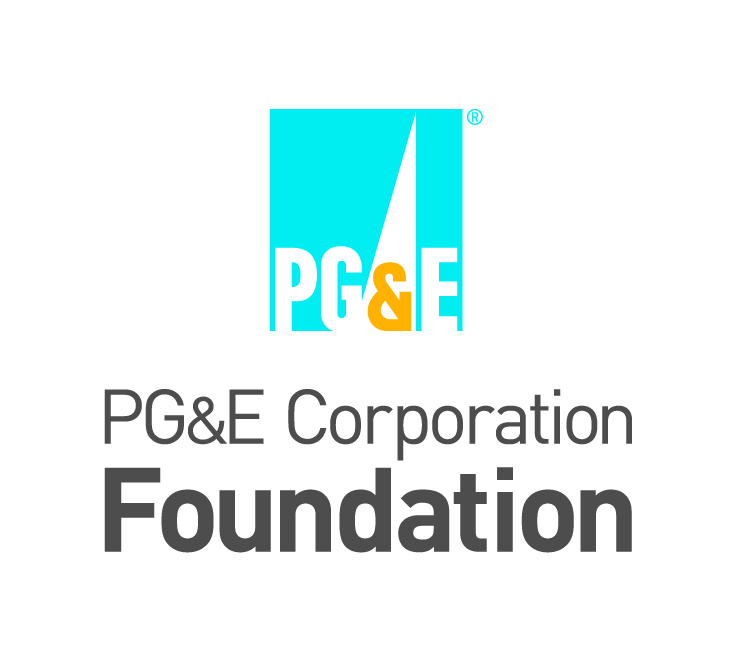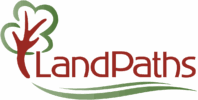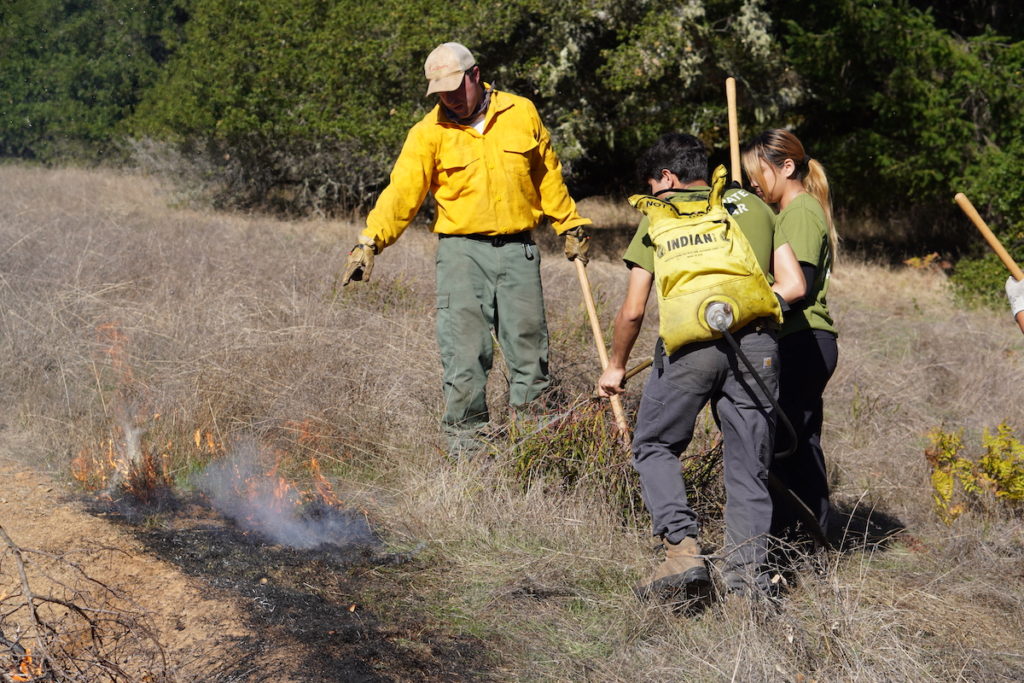
The Good Fire Program seeks to return fire to the land in a safe, respectful, and meaningful community-oriented way.
For thousands of years, and to this day, the Pomo, Coast Miwok, and Wappo peoples routinely burned the land now known as Sonoma County as an integral and indispensable part of their cultures.
The land thus evolved alongside its people and through fire. Yet for nearly two hundred years fire has been suppressed, whether it be Indigenous cultural practices or wildfire. The results of this shift are heavy fuel loading, ongoing erasure of Indigenous peoples and practices, and severe fire behavior as seen in the 2017 Sonoma Complex, 2019 Kincade, and 2020 LNU Lightning Complex and Glass fires.
LandPaths is reintroducing good fire to preserves that we steward in ways both similar to – and different – from other prescribed fire operations.
On the one hand, we conduct routine larger scale prescribed burns to reduce fuel loading and invasive species encroachment, as well as to increase ecological capacity for critical fire tolerant native species.
Such operations are becoming more and more common and are necessary for stewarding large areas of land. These prescribed burns are a collaboration with local organizations, tribes, and agencies, and offer local fire practitioners new terrain on which to hone their craft.
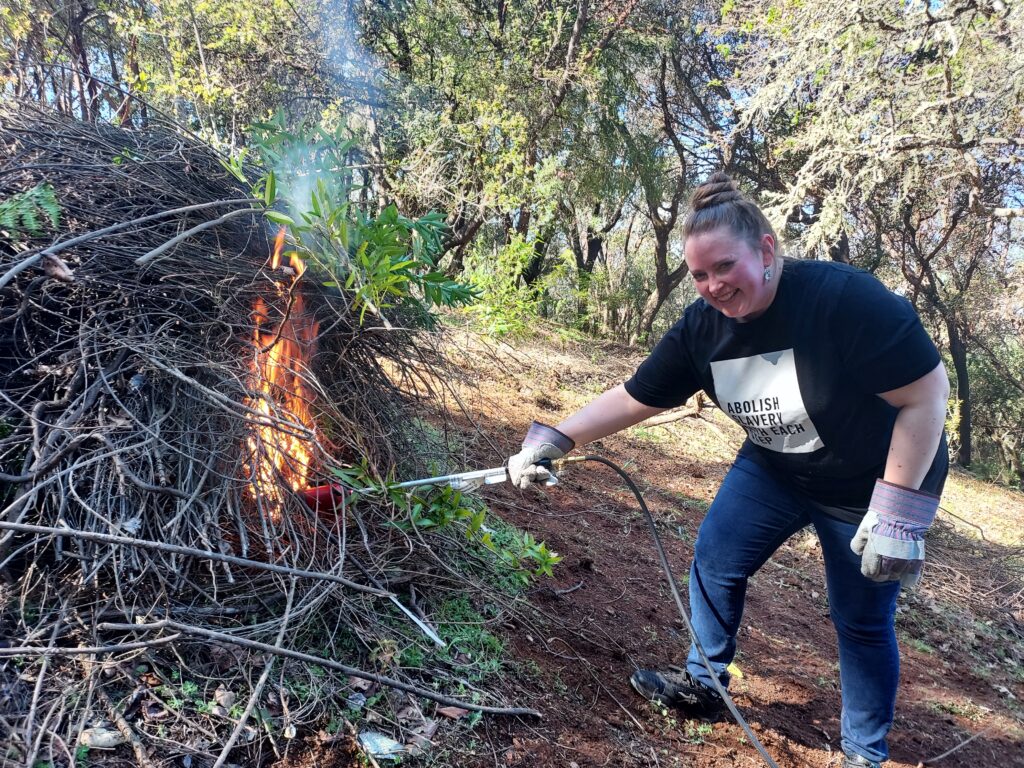
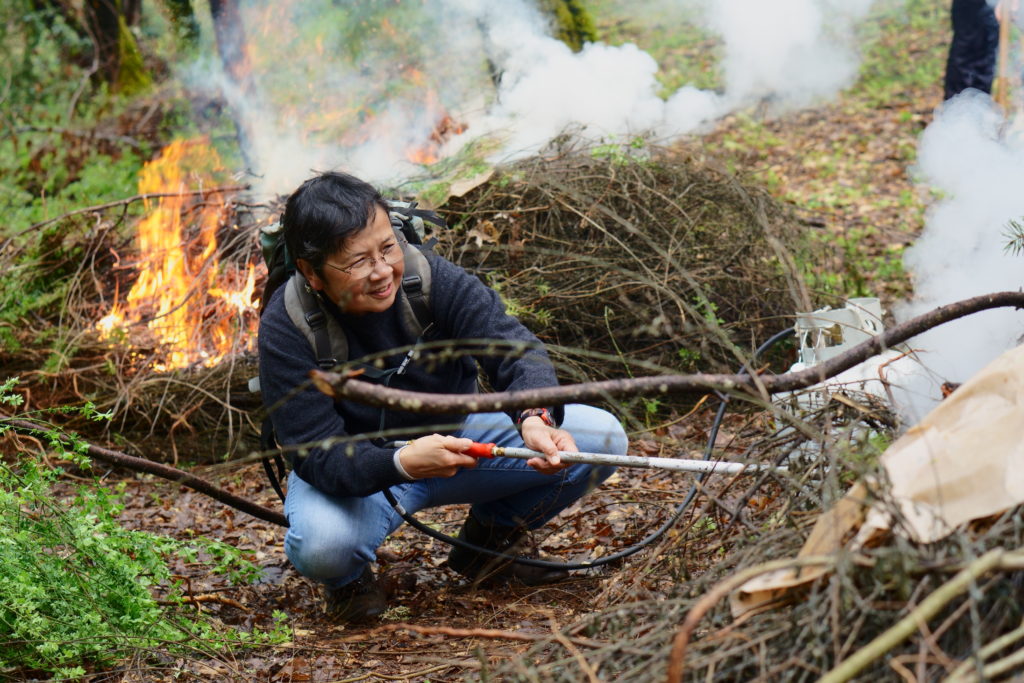
In addition to larger-scale events, we also offer community-focused, smaller-scale, “patch burns” throughout the year.
These patch burns provide a way for everyone, from children to elders, to access the land and begin building a relationship through fire. Patch burns are kept small, with low intensity and severity, and are conducted across a variety of ecosystems.
The result is an incredible mosaic of fire effects experienced by both the land and the community. By reducing the barriers to access, reducing risks and logistics, and increasing the supply of available burns, we create a doorway for everyday people to access the land through fire.
What is good fire?
As Indigenous fire practitioner and researcher Amy Cardinal Christianson states in the simplest sense, good fire “comes from the idea that […] fire is something that is helpful to the environment and to people.”
Good fire promotes native plant regeneration and germination, promotes healthier stream and riparian habitat, reduces dead and dry grasses, shrubs, and timber, reduces invasive species population, increases forage for grazers, and . . . the list goes on.
But, perhaps most importantly, good fire promotes a deepening of positive relationship with the land for many people.
This idea is not new.
In fact, it is common practice for the Indigenous peoples of our area and has been for many millennia. Once we understand the long history of people and fire in our landscape, we begin to understand the value it has in the present.
Done with respect and integrity, good fire roots us in the land.
I would argue that good fire is not just low-intensity fire, or a single prescribed burn, or a fire that gets us back to pre-settlement conditions. Good fire, like good restoration, is much bigger than all of that — at the center of a web of culture and ecology in which human history, the natural world and the future are all entwined. Good fire is an opportunity for us to own our connection to the landscape, and to acknowledge that by using fire, we’re not merely checking a box for some objective form of ecological fidelity or trying to recreate past conditions; rather, we’re making a subjective decision about the values we want to persist into the future. That’s a responsibility and a privilege — and it’s good.
Lenya Quinn-Davidson, Fire Advisor with the University of California Cooperative Extension in the North Coast of California
At LandPaths, good fire means the intentional use of fire that brings together fundamental elements of life: fire, water, people, and land. Good fire is a practice and path for healthier and more resilient preserves, communities, and futures.
Join us for a patch burn sometime!
For questions about the Good Fire Program, please contact Miles Sarvis-Wilburn, Senior Stewardship Specialist at [email protected]
Additional Resources
Our local prescribed burn association, Good Fire Alliance, offers many hands-on workshops on beneficial fires. To join the Good Fire Alliance community listserv, which allows you to sign up for collective burns, and fire-related community events and classes, email: [email protected].
Tips for building safe and effective burn piles in Sonoma County co-written by local fire practitioners
